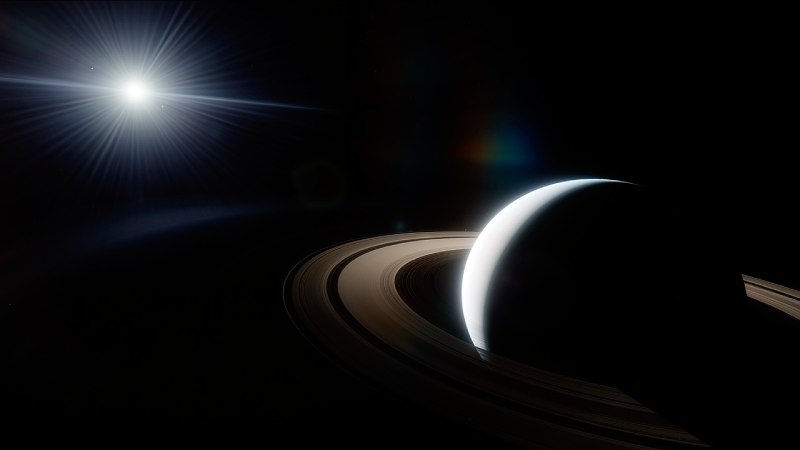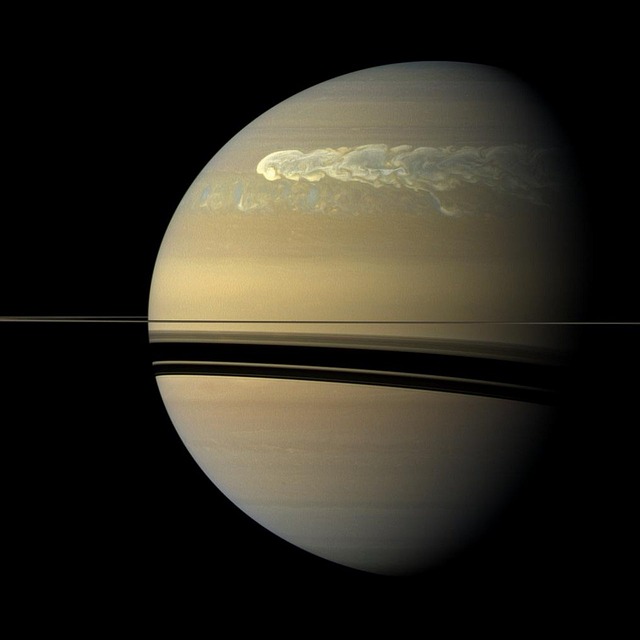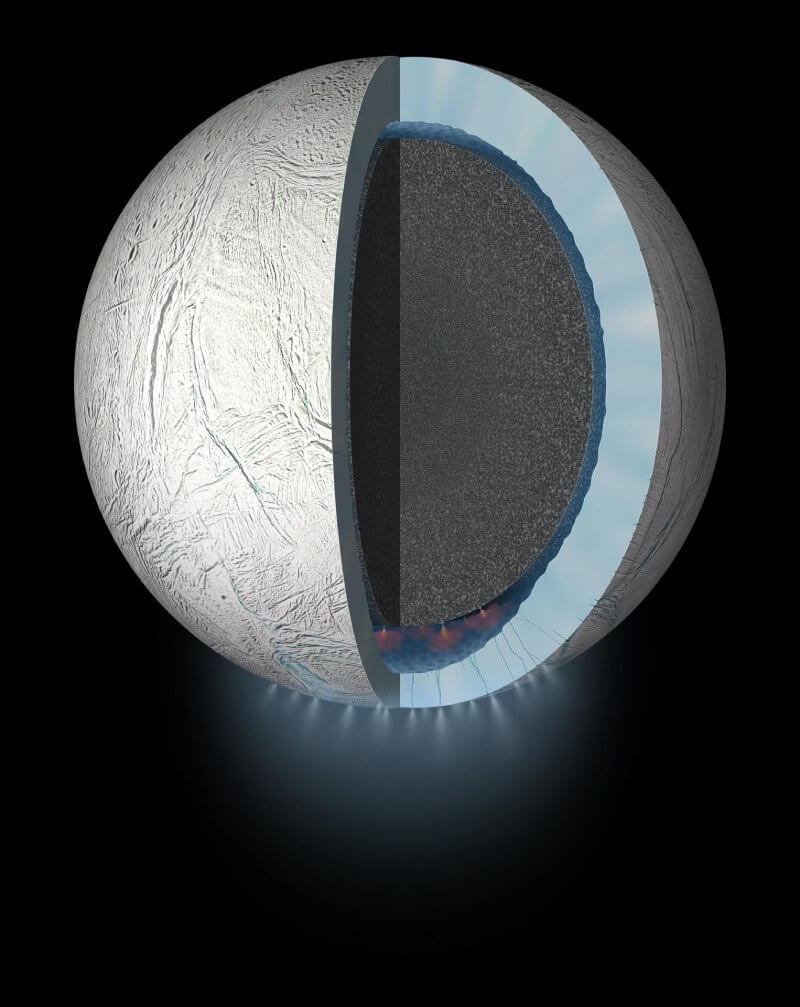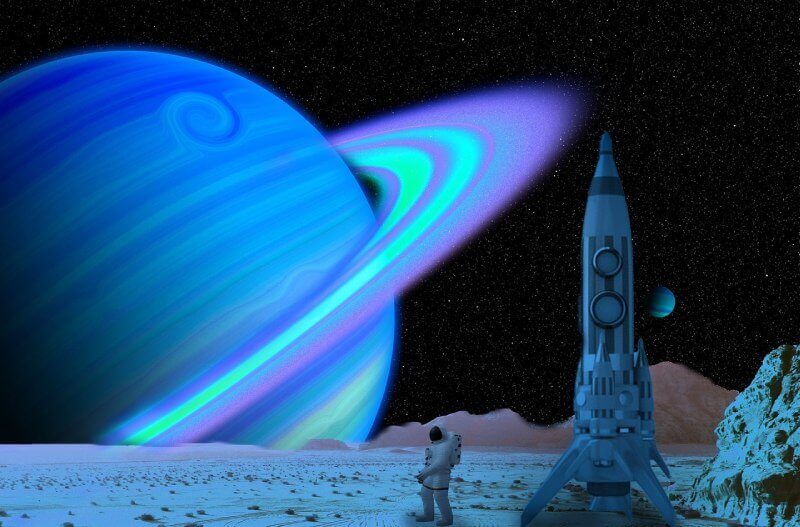Ever since the planets were discovered, scientists have pondered whether or not any of them can support life, and experiments are being conducted to solve the mystery. Upon discoveries, it has been concluded that all of the planets are unable (aside from possibly Mars) to support life, including Saturn.
Saturn cannot support life because of its gas composition, lack of solid surface, extreme temperatures, harsh atmosphere, radiation, and lack of water. In fact, it would be impossible for anything to survive on this ball of gas.
Saturn’s Composition and Atmospheric Makeup
Saturn is what is known as a “gas giant.” A gas giant is a type of planet that is mostly made up of gases, primarily hydrogen, and helium. Unlike terrestrial planets (Mercury, Venus, Earth, and Mars), gas giants lack a solid surface. In addition, they typically have massive atmospheres.
It is theorized that gas giants form farther away from the Sun because, during formation, the outer regions were colder allowing the gases to condense and turn into massive planets. Of course, we don’t know of all of the gas planets that are out there in space, but the ones to our knowledge include Saturn, Jupiter, Uranus, and Neptune.
Difference Between Gas & Terrestrial Planets
Terrestrial planets (Venus, Mercury, Earth, and Mars) have thin atmospheres compared to gas giants. The thinner atmospheres allow a better chance to support life. In order for life to exist, a planet must contain oxygen and nitrogen. Terrestrial planets also have a weaker gravitational pull which results in the lack of a ring system and very few moons.
On the other hand, a gas giant (Saturn, Jupiter, Uranus, and Neptune) has a thick and massive atmosphere that is mainly composed of hydrogen and helium. It is impossible to support life without the elements that are found on Earth. Due to the impressive gravitational pull, gas planets typically have a ring system and multiple moons.
The Absence of a Solid Surface
The Earth has a solid surface where plant life and humans can grow. We are able to set up infrastructures on the solid surface of our planet. However, Saturn is not like that. Saturn has a solid and rocky core but is surrounded by layers upon layers of gasses. There is no solid surface to try to grow any type of life.

Layers of Saturn
Saturn has 5 main layers to it:
● Rocky Core: The heart of Saturn lays a solid and rocky core. This core is composed of rock, metal, and ice. Scientists only have a rough estimate, but it is believed to be anywhere from 9 to 22 times that of Earth.
● Metallic Hydrogen: The first layer surrounding the core is metallic hydrogen. The hydrogen in this layer acts like a liquid.
● Hydrogen & Helium: Above the liquid metallic hydrogen layer, many regions are composed of molecular hydrogen and helium.
● Clouds: Much like Earth, Saturn has clouds, but they are comprised of many different elements than we are used to. The clouds on Saturn are made up of ammonia crystals, water ice, and other compounds.
● Outermost Atmosphere: Finally, the last layer is Saturn’s atmosphere. This layer consists primarily of hydrogen gas, with traces of helium and other elements.
Why is a Solid Surface Important for Survival?
A solid surface is one of the most important aspects of life’s survival. A stable environment is essential because it allows for a place where life can establish itself and anchor itself on the surface. The establishment of one life turns into the development of large habitations and ecosystems.
Surfaces support the development of complex structures that are required for plants, animals, and people. Without the solid surfaces then there is no infrastructure to survive. Earth is a prime example of the importance of a solid surface for the survival of life.
Crushing Atmospheric Pressures
Earth has a moderate atmospheric pressure that enables plants, animals, and humans to survive. However, the same life forms that are capable of surviving on Earth would be unable to survive in environments with extreme pressure. Gas planets have extreme pressures that would crush any type of life form.
Gas planets, such as Saturn, are inhospitable and unsuitable for the survival and development of anything on Earth.
Extreme Temperatures on Saturn
Saturn is about 870 Million miles away from the Sun (nearly 10x farther away than the Earth). Saturn is cold! Unlike Earth, Saturn does not have an internal heat source, so it entirely depends on the Sun for warmth. Since it is so far away, the temperatures drop around -292 degrees Fahrenheit. In fact, Saturn stands as one of the coldest planets in our entire solar system.
Most life that we have discovered on Earth would not be able to survive the frigid temperatures that are present on Saturn.
Harsh Climate

Saturn is plagued with terrible climate and constant storms:
● Major Wind Storms: Saturn experiences powerful and high-speed winds which exceed 1,100 miles per hour. The high speed is due to the planet’s quick rotation.
● Giant Storms: Saturn is known for its persistent storms and there is one that is called the Hexagonal storm at its North Pole. This is a continual storm that forms a hexagon shape.
Radiation Hazards
Saturn puts any type of radiation hazard we have to shame! The planet has a radiation belt that surrounds the planet. The belt contains energetic electrons and protons that can be damaging to both spacecraft and life forms. Due to the high radiation, it is very difficult to even explore or conduct research – let alone try to support some type of life.
Lack of Water
One of the most important things needed for life to form is water. Water is essential for plants, animals, and humans. We can’t survive without water. Water is one of the foundations of ecosystems.
Without water, we would all die off since we would be unable to grow vegetation, and the food chain would not be sustainable. Saturn, from what we have gathered, has no water.
Exploring Possibilities: A Comparison with Other Planets and Moons
Although Saturn is not a contender to support life, there are other celestial bodies that have intrigued scientists:
● Mars: Scientists have discovered evidence of riverbeds and frozen bodies of water – which likely indicates there was once liquid water.
● Europa: This is one of Jupiter’s moons. Europa is covered in an icy crust but underneath resides an entire ocean.
● Enceladus: This is one of Saturn’s moons. Much like Europa, Enceladus has an icy crust but an ocean underneath. Not only that, but scientists have discovered water erupting from its surface.
● Titan: Saturn’s largest moon. Titan has las lakes and seas of hydrocarbons. It is extremely cold, but scientists are intrigued by its unique compounds.
● Outside Planets: Did you know there are other planets outside of our solar system of eight? There are many planets that have yet to be discovered that are orbiting around stars. There is potential for those to have elements to support life.

Scientists have yet to find life on any celestial body outside of Earth. However, that doesn’t mean there isn’t life out there. We just haven’t discovered it yet.
Conclusion: Saturn is Unfit for Life’s Existence
It has been proven that Saturn cannot and will not support life. At least not the life that we know here on Earth. So far, Earth is the only celestial body within our solar system that supports life as we know it. However, scientists are continually searching for planets and moons that might allow the ability to support life.
There are several celestial bodies that show promise of being able to support life but no firm evidence has proven that fact. Future exploration is the only way to be able to figure out if Mars or other entities have the habitat to support life.

